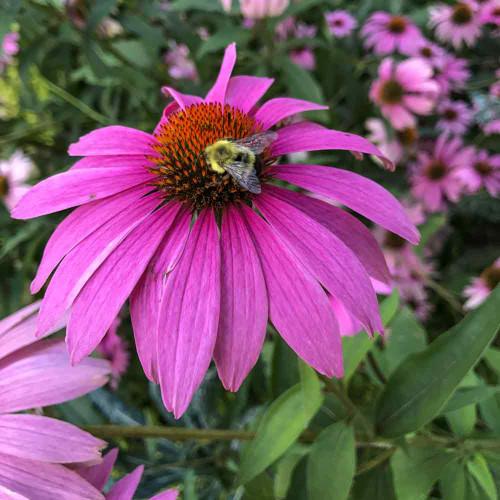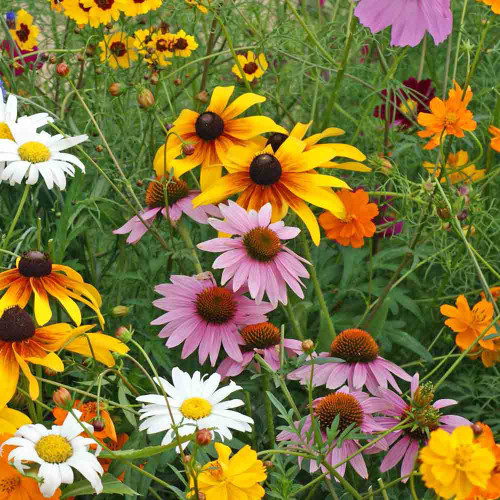Description
Honey Drip Sorghum - Delicious Versatile Ancient Super Grain
Sorghum is an extremely versatile ancient grain that is a nutritional powerhouse you can grow in your garden. It’s a protein source packed full of nutrients that can be grown as a grain, forage or sweet crop, as well as many decorative uses. It’s no wonder it’s one of the top five cereal crops in the world!
Sorghum’s flavor speaks of the earth – deeper, richer, and noticeably more flavorful than any processed sugars, including commercial molasses.
A staple crop since before recorded history, sorghum is just as valuable, hardy, and versatile for today’s home gardeners as it was thousands of years ago.
Honey Drip is difficult to find but is quite drought-tolerant and tolerates marginal soils well, producing impressive harvests from pocket-sized plots. It’s a locally grown sugar, like honey and maple syrup, but is also exceptionally ornamental and a nutritious grain crop for people, animals, and birds.
Excellent as a farm grain as chickens, ducks, and other birds love the seed heads. Children love eating the stems like sugarcane.
Large mature seed heads are cut and dried for everlasting arrangements in a vase or in country crafts, seeming to last forever! A backdrop of sorghum is an impressive sight in the garden, especially when planted next to tall amaranth, making an eye-catching conversation piece in your garden.
Intro
Honey Drip sorghum is vigorous, growing 8-10’ tall plants that are very easy to grow and need little care during the entire growing season. This small grain offers big benefits for home gardeners in nutrition, water conservation, feeding wildlife, and improving soil health.
Sorghum’s extensive deep root system help it stabilize and build soil health by retaining moisture and nutrients. It is well adapted to both heat and drought, requiring on average 30% less water than most other grains.
Young sorghum plants will appear in 3-5 days in warm moist soil and will look very much like blades of grass for the first week or so. Hoe or cultivate between the rows and plants to keep them weed-free when they are young until the plants reach about 4’. From then until harvest time, the plants will shade out most of the weeds and grass.
As the crop matures, small, reddish-brown seeds form on the topmost shoots. The grain heads provide a valuable food source for wild birds like quail and pheasant, as well as domestic birds and animals.
Unlike processed sweeteners like sugar and molasses, sorghum’s plant-based protein is high in fiber, antioxidant rich, and is packed full of Calcium, Magnesium, Potassium, Phosphorus, Iron, Zinc, and B vitamins.
History
Northeastern Africa is thought to be the origin and early domestication of sorghum. An archeological dig at Nabta Playa, near the Egyptian-Sudanese border, dated 8,000 B.C provides the earliest known record of sorghum. The movement of various tribal groups spread sorghum throughout Africa, where it adapted to a wide range of environments from the highlands of Ethiopia to the semi-arid Sahel. Selection and growing environments eventually gave rise to five different distinct varieties of sorghum.
Trade then spread the seed to India and China and eventually into Australia. The first known record of sorghum in the United States comes from Ben Franklin in 1757 who wrote about its application in producing brooms.
Uses
Cook whole grains like rice and quinoa, mill it as a gluten-free flour, substituting it at a 1:1 ratio. Pop the grains like popcorn for a delicious, satisfying nutty snack.
Sorghum improves soil health and fertility through its roots with increased organic matter, retaining important soil nutrients and moisture. If the stalks aren’t used for syrup, cutting them in the fall and letting decay as a mulch captures and retains moisture, reduces wind erosion, and adds nutrients back into the soil.
Sorghum helps wildlife populations thrive as a preferred food choice for quail, pheasants and many other species of birds. Its many leaves and sturdy structure create wildlife habitat and protection from the elements during harsh winters and extreme summer heat. In turn, these birds help reduce pest insects from harming your garden.
Growing Tip
Plant sorghum about ten days after the proper corn-planting dates in your area. Plant in rows or in hills.
Harvesting Tip
You can judge the proper harvesting time for the juice of the stalks by the condition of the seed heads. When the seeds are no longer milky, but still in the doughy stage, it is time to cut for juicing. When your thumbnail will no longer dent the seed the ideal time for harvesting for syrup has passed. Than, you can use the seed heads as a grain.
Learn More
From the soil to the seed to the food you eat - we'll help you grow your best garden!





















